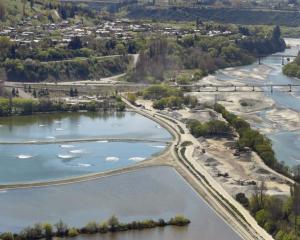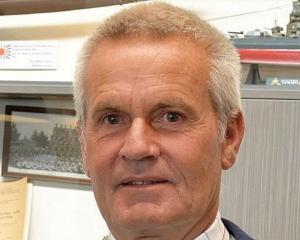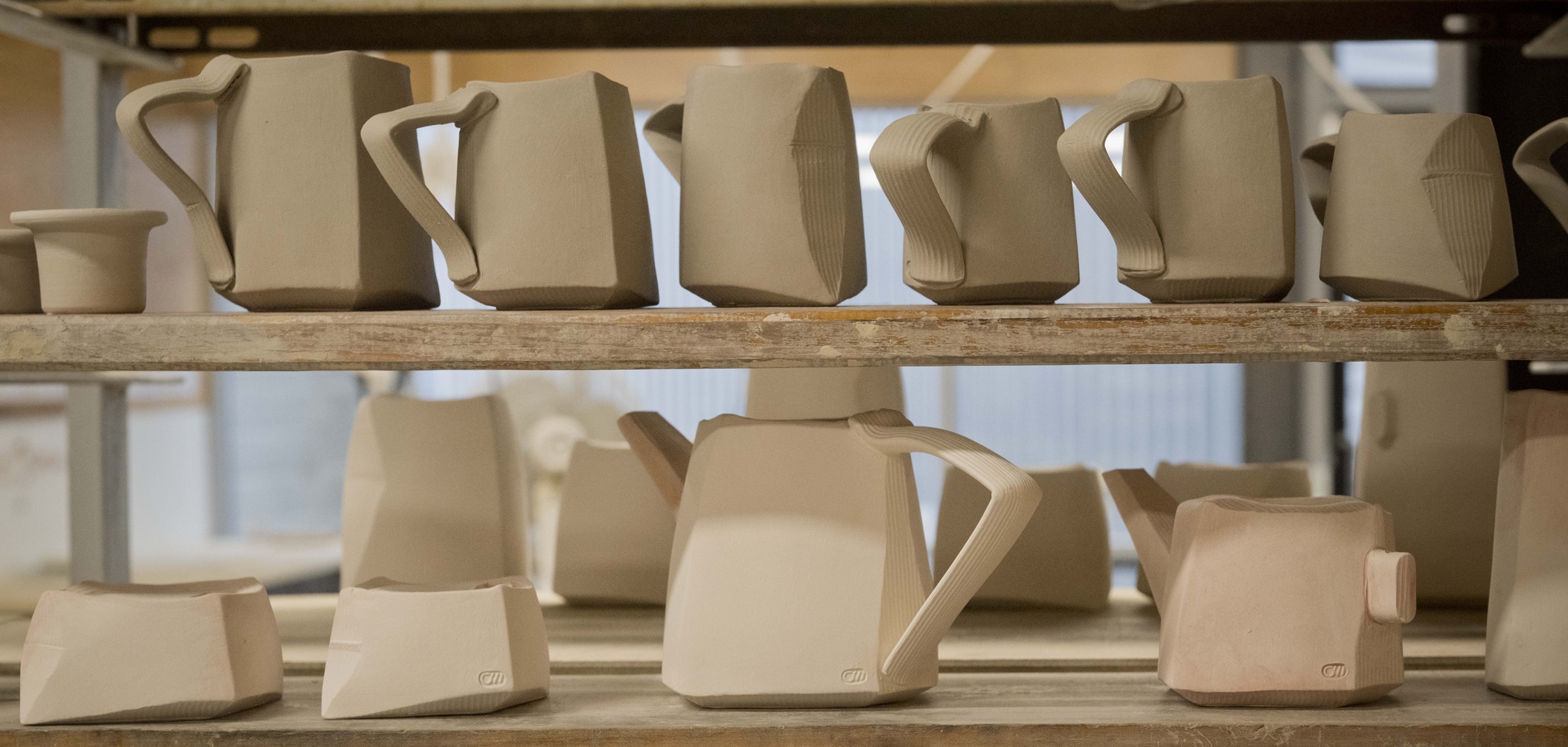
Standing in West Coast swamp waiting for the frost to melt so he could pick sphagnum moss, Chris Weaver had one thought — "I’m not going to do this for the rest of my life".
As a dad with a young family, he had been attracted by the good money the job offered, but the experience, while not fun, did give him the determination to make a real go of his first love, potting.
He discovered a love of clay as a child when his father dug out steps in a bank of the family’s property in Nelson. Then at high school he gravitated towards the art room, where he spent most of his time.
"I was only interested in art."
Finding a potter’s wheel stashed away in the back cupboard, he dragged it out, found some clay and taught himself to throw pots.
"It’s a very addictive kind of material. I think its the immediacy of being able to create something quickly."
When he was in the fifth form (year 11), his art teacher told him he was wasting his time at school and should go to art school, recommending Otago Polytechnic’s course.
Weaver, probably the last student they let into the course with just school certificate, was just 16 years old and a "fairly innocent country boy" when he arrived at art school.
"I grew up really quickly, and I think I was like a sponge, I just sucked it all in. The whole world opened up to me."
He specialised in design and sculpture for his fine arts diploma, and followed that up with a ceramics course.
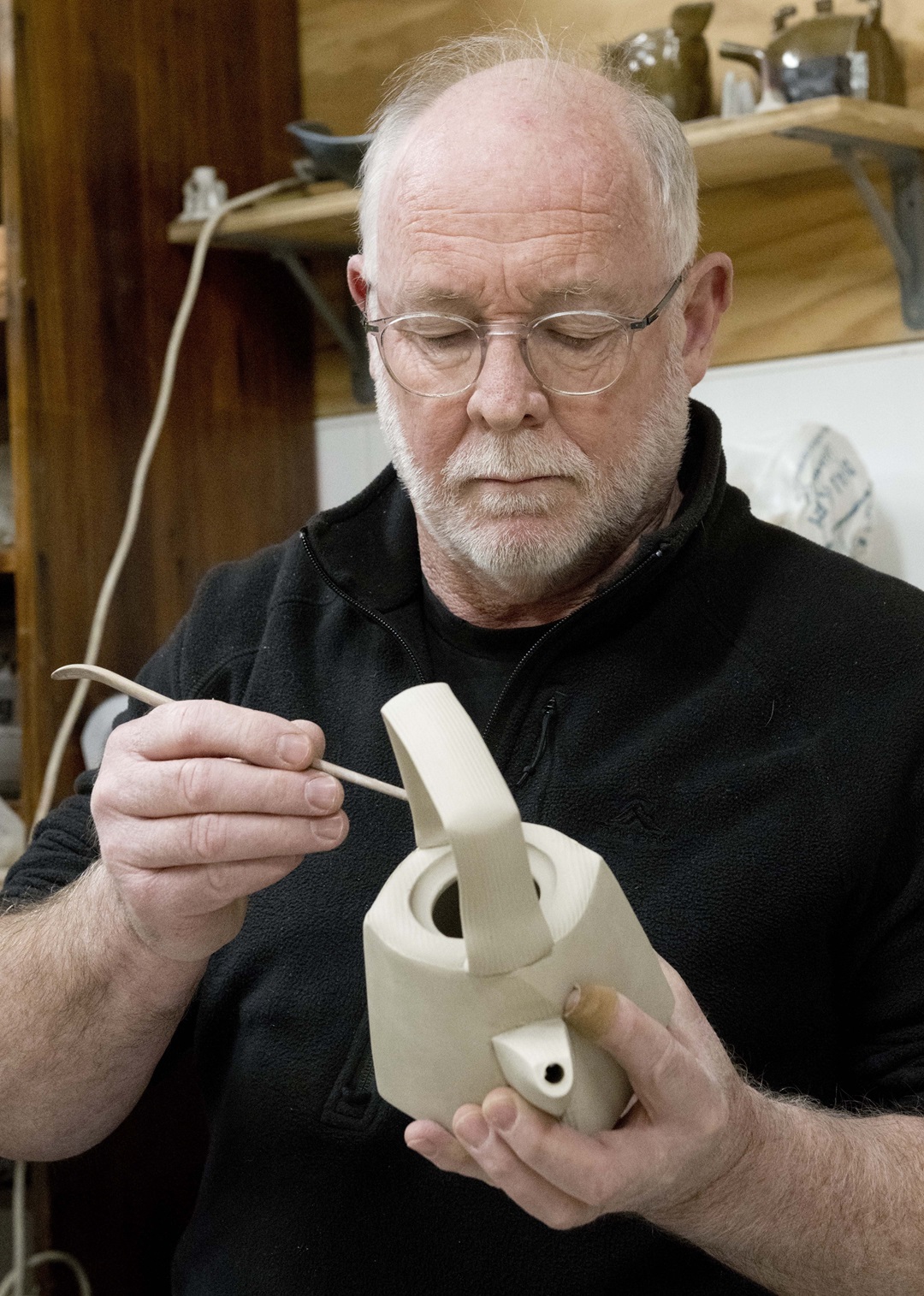
"I just love it there."
He continued to pot, building a studio and kilns as money allowed at Kaniere on the outskirts of Hokitika. Back then jobs were plentiful on the Coast, and he could pick up short-term work when needed to fund his growing family and time working on his pottery.
"So when the money ran out I’d get a job for a few months, and then get back to it again."
With a wife who helped support the family and the determination not to go back to harvesting sphagnum moss, Weaver focused on making a go of being a potter.
"I decided I'd try to make pots that I thought other people would like."
He tried his hand at commercial pottery but did not enjoy it.
"To make money, you have to almost become a factory worker. And I didn't enjoy that at all. But I did do it for a while. You do what you have to do. But the work suffers, I think, when you have to do that."
The 1970s was the heyday of potters, when you could "put a brown glaze on anything and it would sell", he says. But it all came to an end when government regulations opened the door to cheap Chinese tableware, and a lot of potters gave it up.
"That was all I could do, so I kept going. But I decided that I'd make something that you couldn't buy anywhere else. That’s how I survived that, and now ceramics is making a comeback again."
It was when he was cleaning out his grandmother’s house that he found the inspiration that would change his career trajectory — an old cast-iron flat iron dug out from the hot water cupboard.
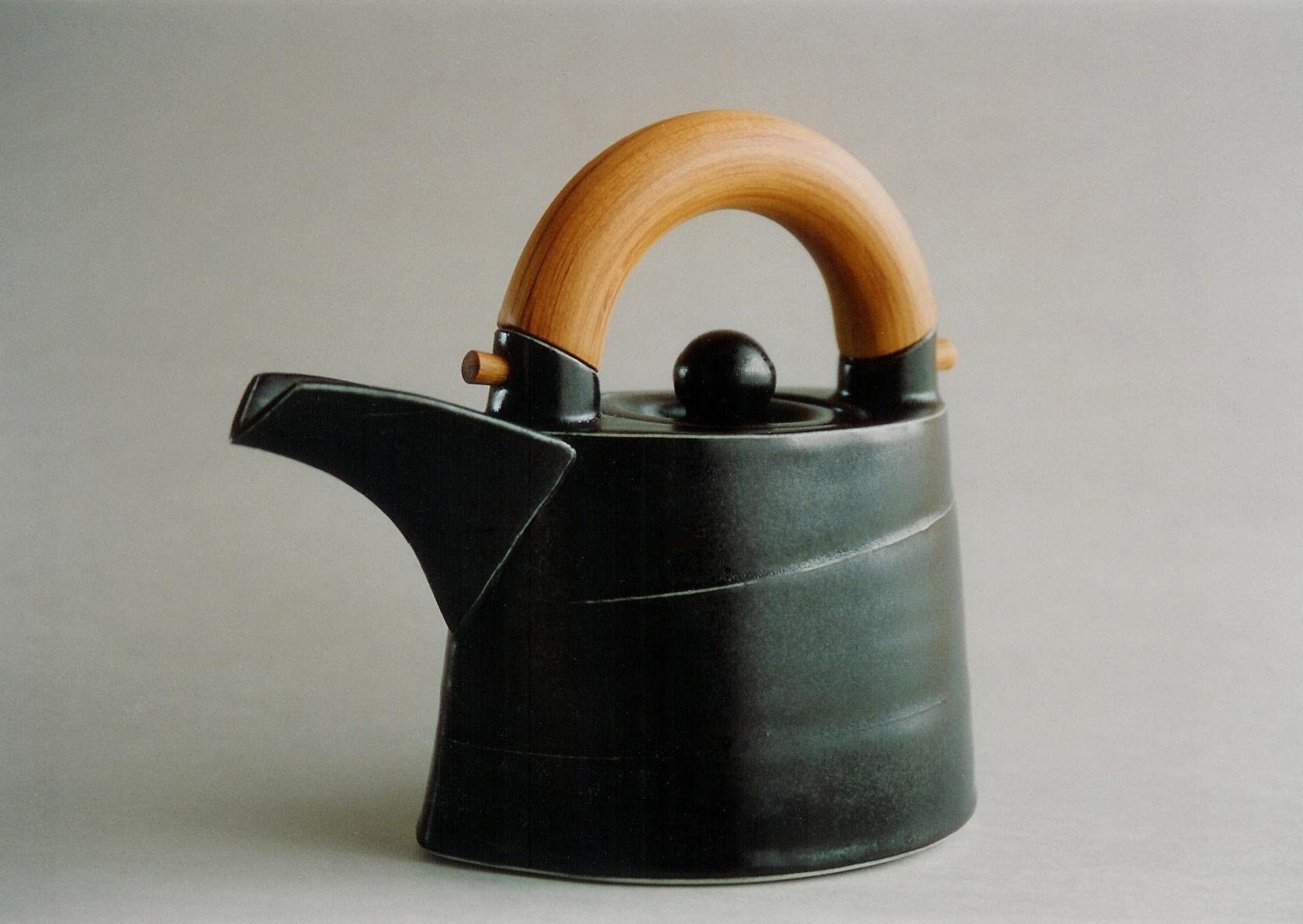
The semi-matte black teapot with a rimu handle that emerged went on to win several awards. He selected the glaze as a direct reference to the flat iron that influenced the work.
It was a pivotal point for Weaver, who used to have to "go around hawking" his pots to galleries, something he hated doing, but with the wins the galleries came to him.
"Getting that first breakthrough is nice. That's what I tell the students. When you make work for yourself, that's when you make the best work."
tableware has always been Weaver’s focus as he enjoys the challenges it provides, and it is important to him that they are functional, not just decorative.
"There is the design challenge of visually balancing the spout, handle and lid. So design and function is quite important. So I can't make anything frivolous, and I don't like to decorate, so I have to rely on form."
Over the years he has developed processes and techniques that make that easier, and when making a new series usually starts with the teapot first.
"Everything else sort of comes from that. Once I've resolved the teapot, the other things follow quite easily."
Each series he makes flows on from the work that has gone before. In 2011 Weaver won second place in the Portage Ceramic Awards with his Made to Measure teapots and the scholarship award in 2014.
He focuses on the main body of the teapot first. He does not see the point in replicating the perfect functional teapot, believing that market has been captured by the round-bodied English teapot.
"I guess it's an artistic expression that I'm using to create something. So I do sacrifice a little bit of function sometimes. I've never been satisfied with just round pots, so I've always felt the need to alter them."

"All of those pots of wheels thrown, even though they look as though they've been hand slab built. Someone once described it as hand-building on the wheel."
Weaver likes the process as it is quicker. Once formed on the wheel he then uses a variety of techniques to change their shape including squashing, cutting and incising them.
"Clay is such an immediate responsive material, so I can develop forms quickly."
Keeping things simple means paying close attention to detail, with Weaver seeking out glazes that will break on the edges to reveal the material underneath and the marks made in the clay.
"I use a lot of cutting wires, twisted cutting wires, to leave marks as kind of evidence of the process."
While he started out with a wood-fired kiln, having to keep feeding it was a problem, so he moved on to an electric kiln, which provides more reliable results.
But recently he has doing a lot of salt-firing, enjoying the unpredicatability of the method.
"I like the way that the glazes break on the edges and they connect. There's the opportunity for something special to come out of the kiln. There's a bit more risk, but because I don't decorate it, it's nice to be able to use the flame to decorate the piece. What I love about the salt-firing is that. You still get that buzz. It's a bit like opening a Christmas present."
Over the years he has also created many of his own tools out of driftwood he finds on the beach. It was a case of needs must when in the 1980s it could take three days for a tool ordered from Christchurch to get to him. So for each new series of work, he creates new tools.
"They were quite organic, just because of the nature of the material. And they just felt so comfortable to use. And in the end they add to the pleasure of making."

That is not to say he has isolated himself, though; his work has been shown around the world and he has been invited to complete residencies in Australia and America. In 2015 he was admitted to the International Academy of Ceramics in Geneva.
"In America there was a good response. I’m doing something different, a lot different to what they do."
At a residency in China, where he found processes were very traditional, he got to work in a brick and tile factory, where everything he made in the first week cracked.
"So I’m backed into a corner — and I just looked at what they were doing and changed my technique, and a whole lot of new work developed from that."
He has also exhibited and held workshops in Japan, Taiwan and Hong Kong. In Japan many people commented on the Japanese influence in his work, although that is not a conscious intention from Weaver.
On his travels he has been able to swap pieces with other ceramicists.
"It’s the work I couldn’t make myself. I mean the best work that people make I think is when they are being true to themselves. And I can see that in other people’s work, and I really appreciate that."
In Dunedin, on a residency at the Dunedin School of Art while completing work for his latest exhibition at Brett McDowell Gallery, Weaver is making the most of the school’s different kilns, in what could be described as a bit of a gamble given it is only three weeks until the exhibition opens.
"I had a couple of tests come out yesterday from the gas kiln, and I was quite encouraged by those things. I do work better under pressure."
TO SEE
"Made in Dunedin", Chris Weaver, Brett McDowell Gallery, June 20-July 10th.








